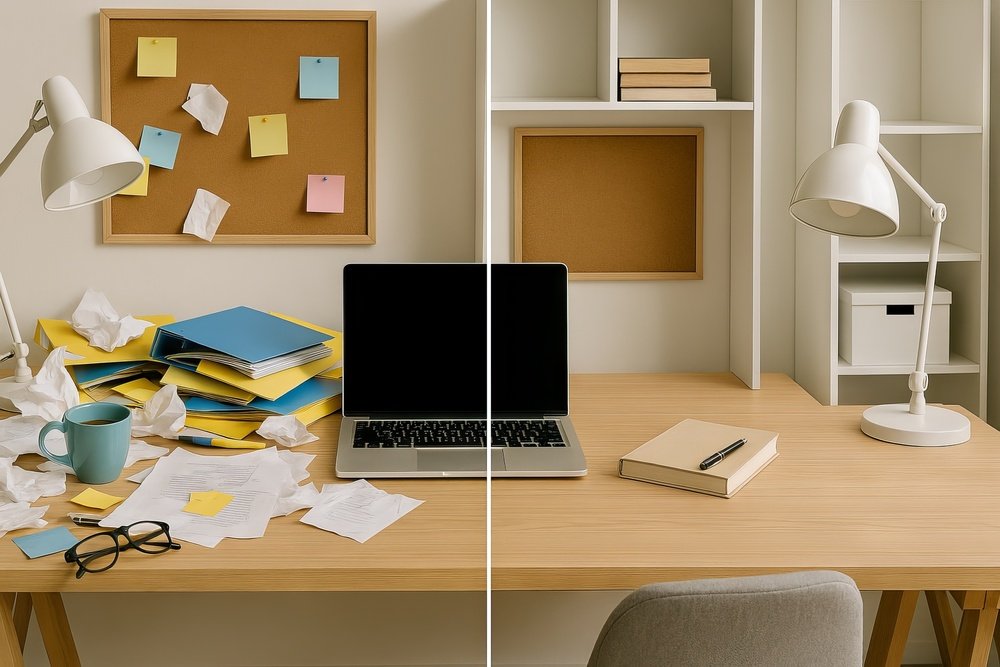All Pro Cleaning Systems teams have cleaned all sorts of commercial spaces. Our teams clean medical offices, business offices, and retail locations. We clean restaurants, bars, nightclubs, and coffee shops. Even daycare centers and private schools are on the All Pro Cleaning Systems client list. Regardless of the environment, there is one thing that can make it difficult to clean any space: clutter.
We often think of clutter in terms of the home environment. That is not without reason. But clutter isn’t limited to residential spaces. Plenty of workplaces are just as cluttered as the most cluttered home in your town. The good news is that a cluttered workplace doesn’t have to remain that way.
Below are some best practices for addressing clutter in the workplace. As for why it should be done, consider your employees and visitors. Clutter creates a hazardous and uncomfortable environment that does not promote wellbeing. It doesn’t help your cleaning crew either. Clutter makes their jobs that much harder.
Plan a Mass Removal Event
At the top of the best practices list is planning a mass removal event. Whenever the workplace starts looking cluttered, pick a date on the calendar and then inform employees that on that date, they are expected to remove all the clutter in their individual workspaces. The idea is to sweep things clean. This allows management to do a reset on policies designed to reduce clutter.
Make note of the fact that management sometimes needs to define what clutter is. Why? Because one person’s clutter is another person’s necessity. We all have different definitions of what constitutes clutter. Someone needs to set the standard for a mass removal event to work. It might just as well be management.
Implement Organizational Policies
Conducting a mass removal event opens the door to implementing organizational policies. For example, you might work in a busy office environment where cluttered desks are the norm. An example organizational policy could be one that dictates the use of file cabinets to keep stacks of paper off employee desks.
Another organizational policy could limit the number of personal items workers keep in their cubicles. Limiting the volume, size, and nature of personal items can go a long way toward reducing clutter.
Implement Storage Solutions
A certain amount of office clutter can be directly related to the supplies and equipment employees need to do their jobs. Implementing effective storage solutions can help maintain a semblance of organization.
A copy machine standing atop a table can be moved to a stand with built-in storage. The stand can accommodate copy paper, toner refills, and other supplies related to the machine. That way, the supplies aren’t stacked on the floor.
Create a Tidying Checklist
There is always the risk that clutter will return quickly after a mass removal event. There may be no way to stop it entirely, but a good defense against clutter returning is creating a tidying schedule and checklist.
For example, management can provide employees with a checklist of things to do at the end of their shifts. The list could include things like emptying the trash bins and making sure all paperwork is either filed or put in the appropriate in/outbox. Spending a few minutes tidying up in the evening can keep clutter at bay for longer.
A cluttered workplace is an uncomfortable workplace that is hard to clean. It might also be unsafe. By removing clutter and taking steps to prevent its return, a workplace is made better for everyone involved. Take our word for it. As professional cleaners, we know a thing or two about clutter.


